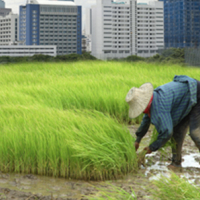Structural transformation away from agriculture: What role for trade?

An understanding of how and why economies structurally transform away from agriculture as they grow is crucial for developing sensible farm and food policies. Typically, analysts who study this and related structural change issues focus on sectoral shares of gross domestic product (GDP) and employment. This paper draws on trade theory to focus as well on exports. It also notes that the trade costs of some products are too high at early stages of development to make international trade profitable, so a nontradables sector is recognized. The general equilibrium model presented in the theory section provides hypotheses about structural change in differently endowed economies as they grow. Those hypotheses are tested econometrically with a new annual endowments dataset covering 1995 to 2018 for more than 130 countries, a period when trade restrictions were at their lowest for at least a century. The results are consistent with long run de-agriculturalization in terms of sectoral shares of GDP and employment in the course of national economic growth. But a decline in agriculture’s share of exports in every country is not inevitable. Moreover, policies can be designed to support growth-enhancing and welfare-improving structural transformation without harming agricultural exporters and distorting world trade in farm products.
Keywords: patterns of structural change, de-agriculturalization, comparative advantage, farm productivity growth JEL codes: F11, F43, F63, N50, O14
Updated: 27 July 2024/Responsible Officer: Crawford Engagement/Page Contact: CAP Web Team






